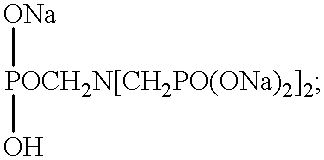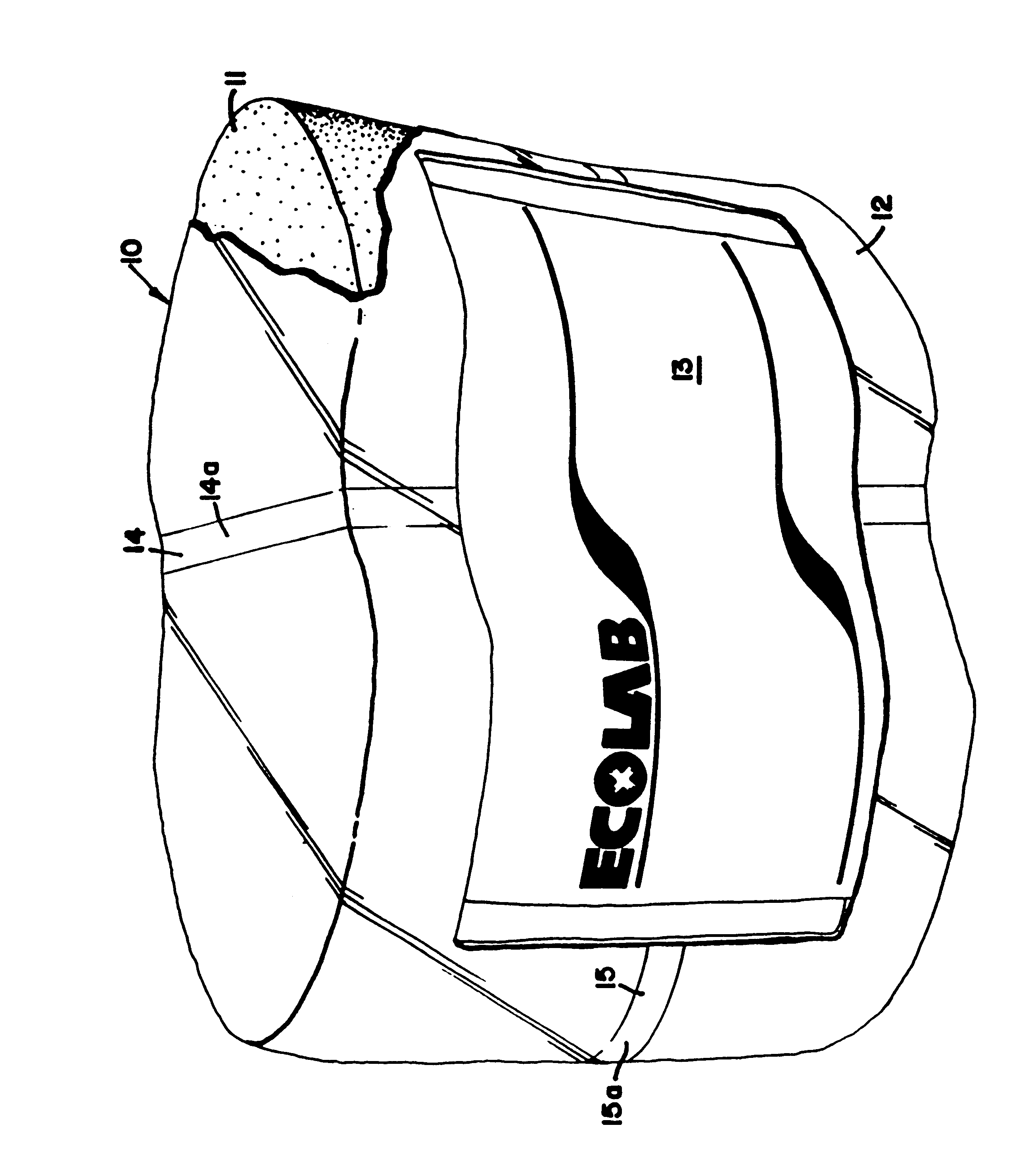Stable solid block metal protecting warewashing detergent composition
a technology of solid block metal and detergent composition, which is applied in the direction of detergent powder/flakes/sheets, detergent compounding agents, inorganic non-surface active detergent compositions, etc., can solve the problems of insufficient solidification, hydroxide can interfere with solidification, and leave a product resembling slush, paste or mush like a wet concr
- Summary
- Abstract
- Description
- Claims
- Application Information
AI Technical Summary
Benefits of technology
Problems solved by technology
Method used
Image
Examples
example 2
Spot and Film Cleaning Performance Test:
10 Cycle Spot, Film, Starch Spec Test / Protein and Lipstick Removal
Purpose:
To evaluate Cleaning Performance of Metal Protecting detergent with 17.5% GD Silicate
The following formula which can be solidified using the procedure of Example 1, in an Ash Based Solid Formula, was used in the test by adding the components separately to the machine.
TABLE 1
TABLE 1
Tables 1 and 2 demonstrate the excellent cleaning properties of the detergents of the invention.
In the following Tables 3-6, solid block detergents having formulas similar to that in Example 2, except for the noted amounts of silicate, were tested for corrosion properties. In the following tables, the aluminum coupons are first washed with a detergent carefully with a soft sponge. The coupons are then dried in toluene and placed in a desiccator for equilibration. The equilibrated coupons are placed in a glass bottle with solutions of detergent to be tested and are then placed in a water bath at...
example 3
Enhanced Solidification with K.sup.+ Salt of HEDP
The solid block of the invention was made by preparing the premixes shown below with the extrusion procedures above. A simulated extrusion was performed on a laboratory scale by mixing the premixes in order and packing and then permitting the materials to solidify in a container. Alternatively, the premixes were mixed together and compressed into tablets.
KOH or mixed KOH / NaOH can be used to neutralize the liquid phosphonic acid 1-hydroxyl ethylidine-1,1-diphosphonic acid (Dequest 2010 / Briquest ADPA). Interestingly, a K.sup.+ salt of Dequest 2010 / Briquest ADPA is exemplified by the formula shown below. The lab simulation of the extrusion of this formula produced excellent results--firm after 5 minutes and solid after 10 minutes. Most significantly, the pressed tablets have not swelled or cracked after 7 days.
example 4
Using the procedure of Example 3, the following premix preparations were combined to form a solid block detergent.
The combined materials were extruded as described in Example 1 and rapidly solidified in about 5 minutes to form a solid block detergent that was dimensionally stable (did not swell) and provided excellent warewashing properties with aluminum metal protection.
Generally the carbonate / silicate compositions of the invention tested for aluminum corrosion have corrosion levels less than 10 mils per year which is a substantial improvement over typical caustic based detergents that can corrode aluminum at a rate of greater than 500 mils per year. Further, the metal protecting compositions of the invention maintain a shiny gray appearance when used at a level greater than about 12.5%, preferably greater than 15 wt % of the solid detergent material. The anticorrosion effect and the cleaning effect of the detergents appear to be most marked at concentrations of total detergent tha...
PUM
| Property | Measurement | Unit |
|---|---|---|
| wt % | aaaaa | aaaaa |
| wt % | aaaaa | aaaaa |
| melting point | aaaaa | aaaaa |
Abstract
Description
Claims
Application Information
 Login to View More
Login to View More - R&D
- Intellectual Property
- Life Sciences
- Materials
- Tech Scout
- Unparalleled Data Quality
- Higher Quality Content
- 60% Fewer Hallucinations
Browse by: Latest US Patents, China's latest patents, Technical Efficacy Thesaurus, Application Domain, Technology Topic, Popular Technical Reports.
© 2025 PatSnap. All rights reserved.Legal|Privacy policy|Modern Slavery Act Transparency Statement|Sitemap|About US| Contact US: help@patsnap.com


